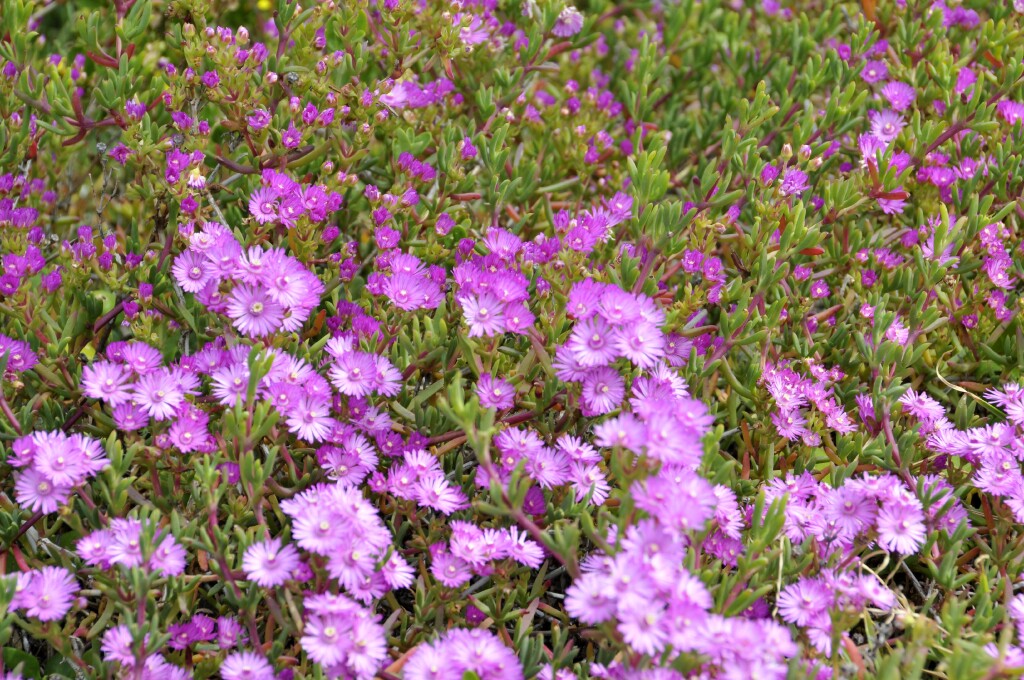Ruschia geminiflora
(Haw.) SchwantesErect to decumbent shrub; branches, leaves and calyx red-dotted. Leaves ± linear, triquetrous, incurved, 10–36 mm long, 1–3 mm wide, pale green to grey-green. Flowers in a terminal several–many-flowered cyme; pedicel 4–8 mm long; receptacle obconic, c. 4 mm long; sepals triangular to ovate, 4–5 mm long, 3 broader than others and with membranous margins; staminodes pink, c. 1.5 times as long as sepals. Capsule obconic, c. 4 mm long, c. 6 mm diam. Seeds subglobose, c. 10 mm long, dark brown, minutely reticulate. Flowers Sep.–Nov.
VVP, GipP, OtP. Also naturalised WA, SA. Native to southern Africa, grown as a rockery creeper and has become naturalised in Victoria from garden waste, especially along the foreshores in Port Phillip Bay, but also known from a road cutting at Clunes.
Vegetatively this species may resemble some species of Lampranthus. The two genera are most reliably differentiated on capsule morphology. Ruschia differs from Lampranthus in lacking valve wings (usually present in Lampranthus), and in having closing bodies (absent in Lampranthus). From the naturalised species of Lampranthus, Ruschia geminiflora can also be differentiated by its several–many-flowered cyme.
 Spinning
Spinning
